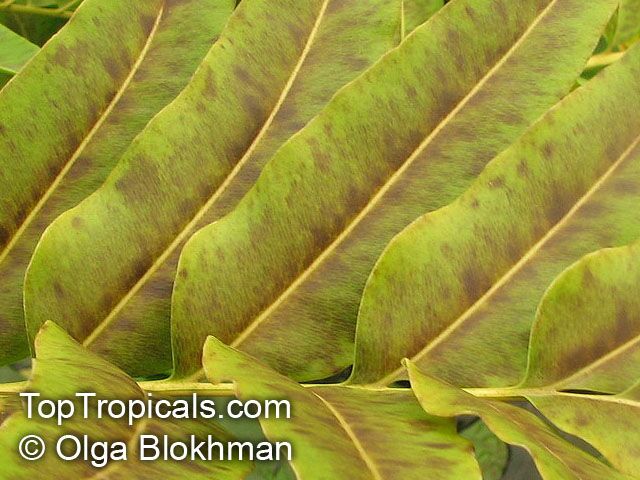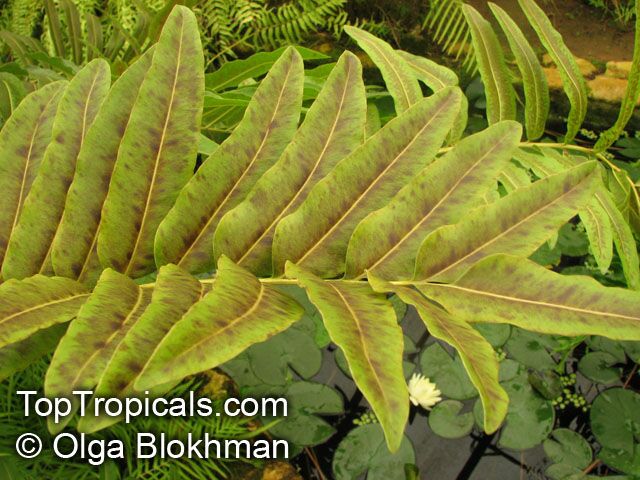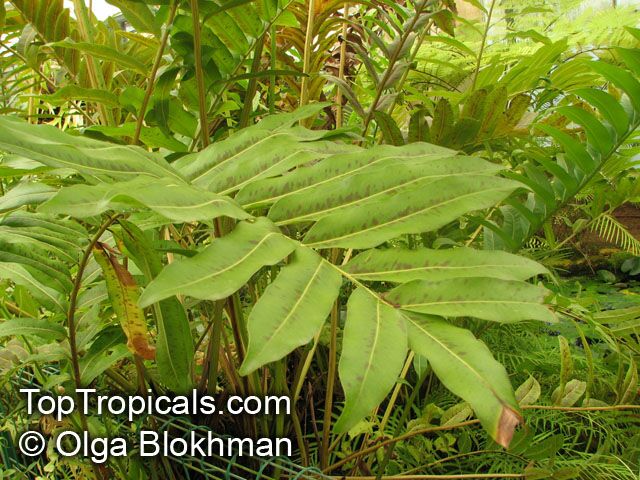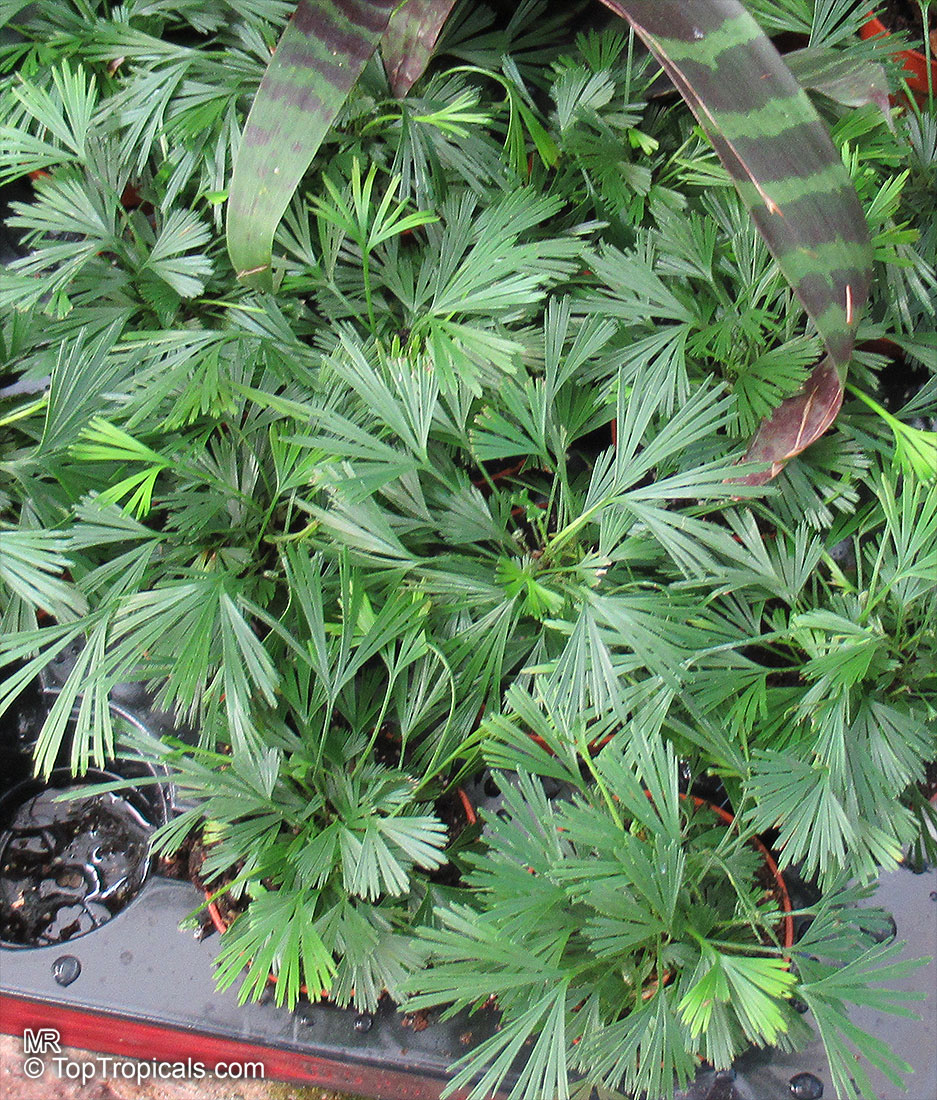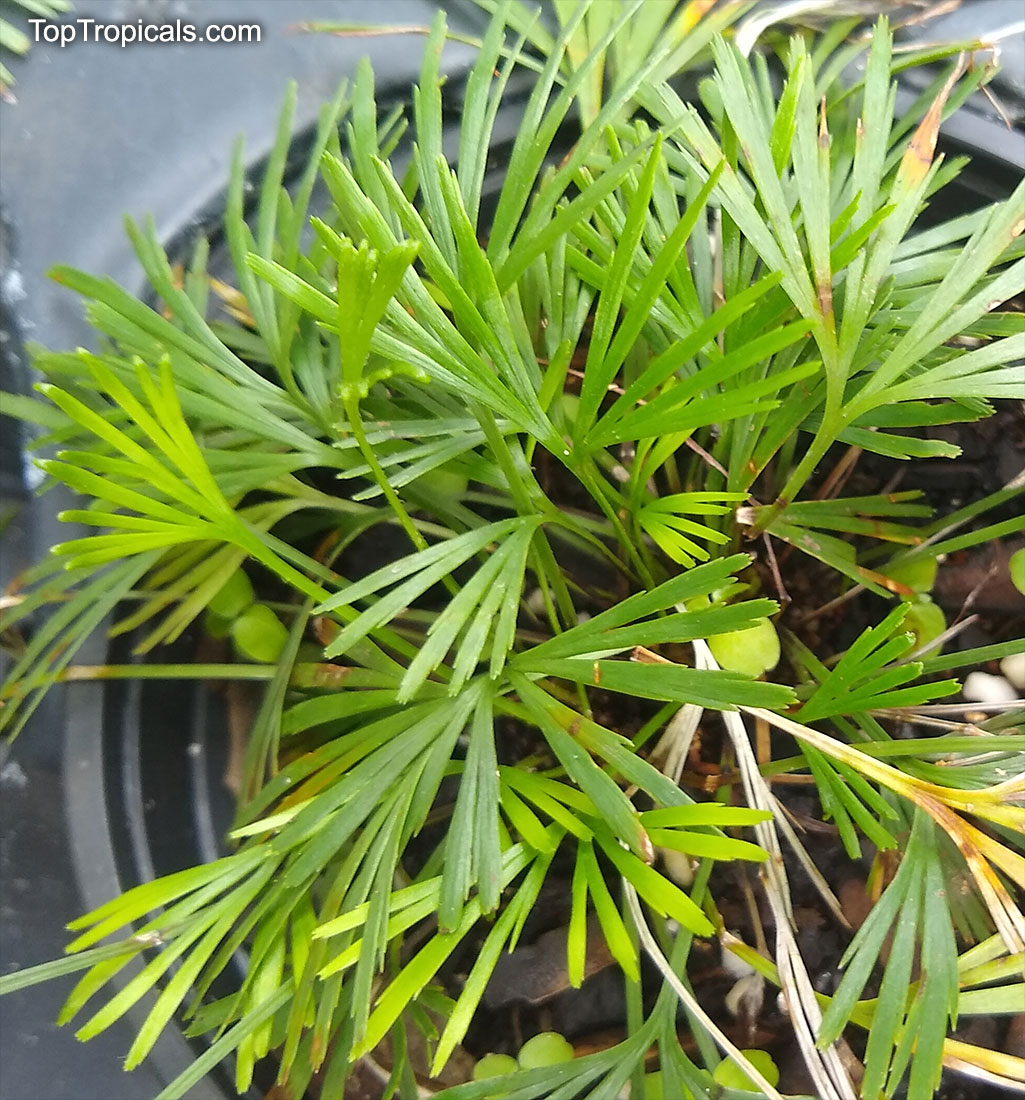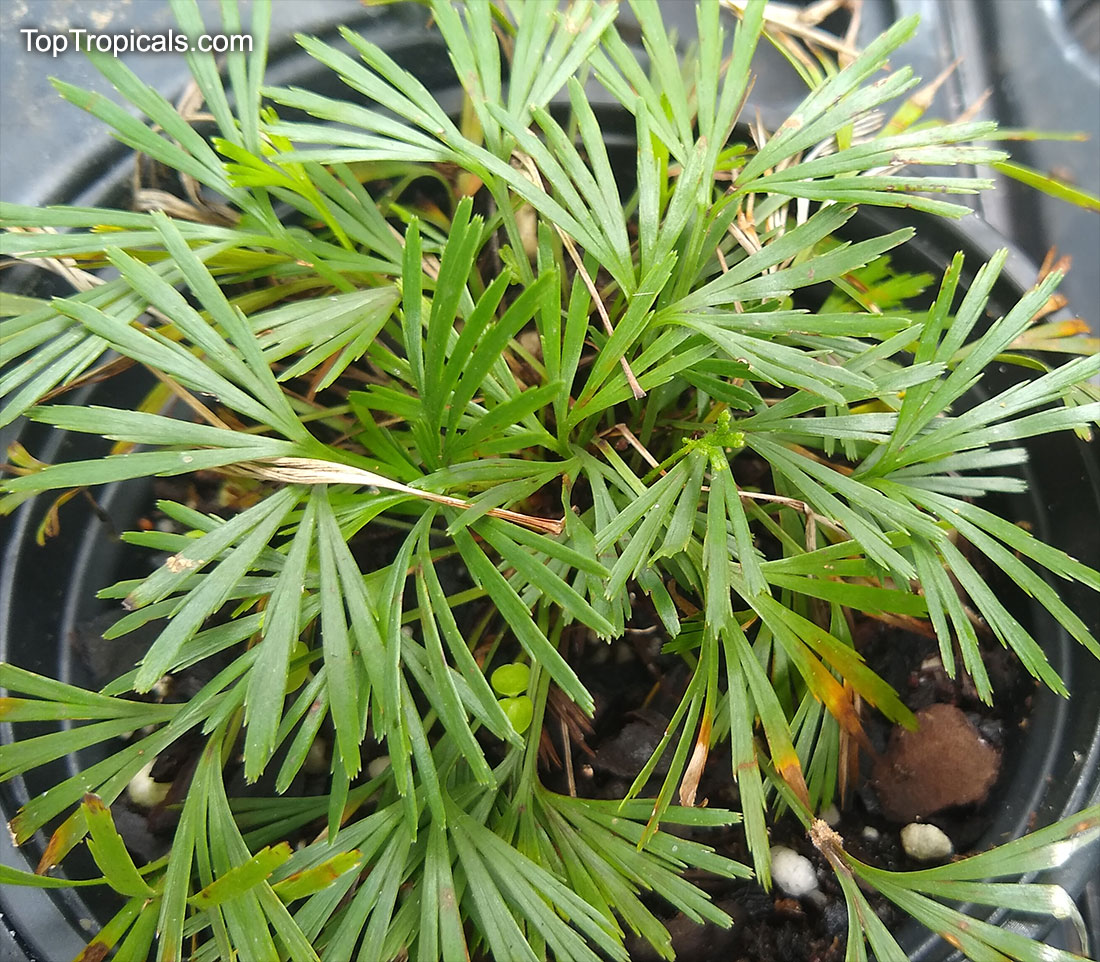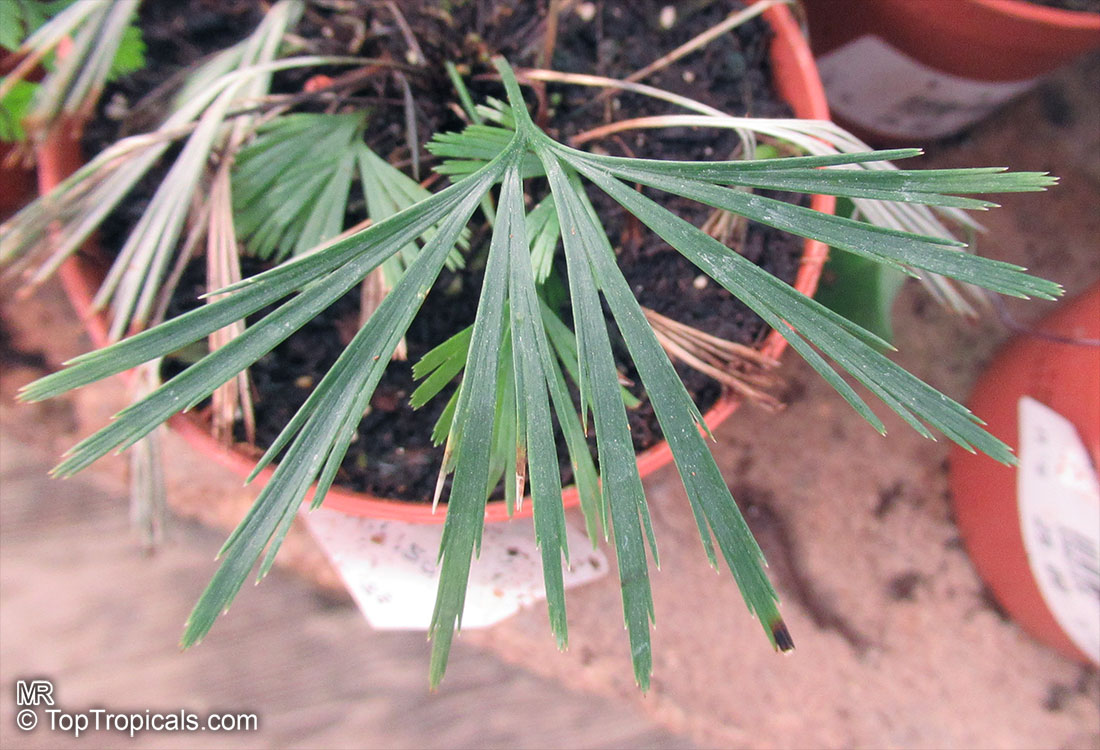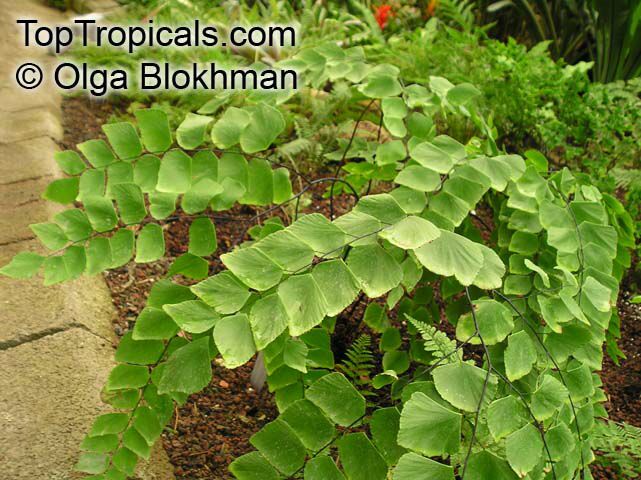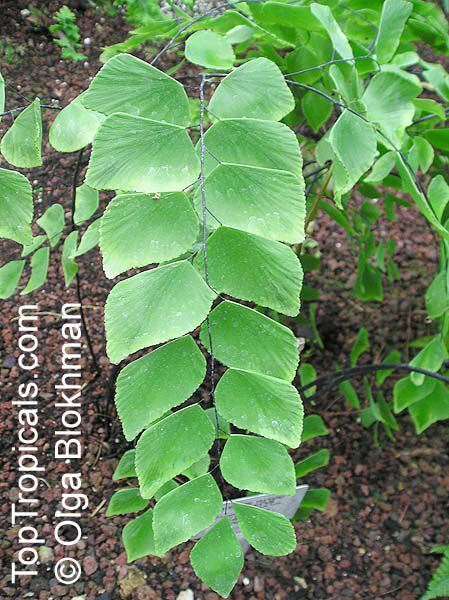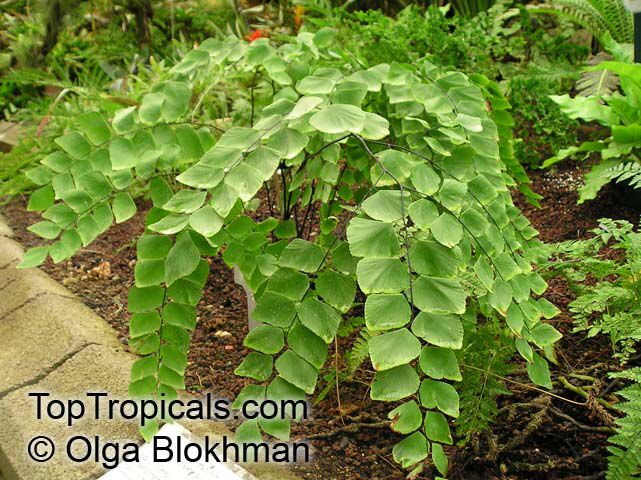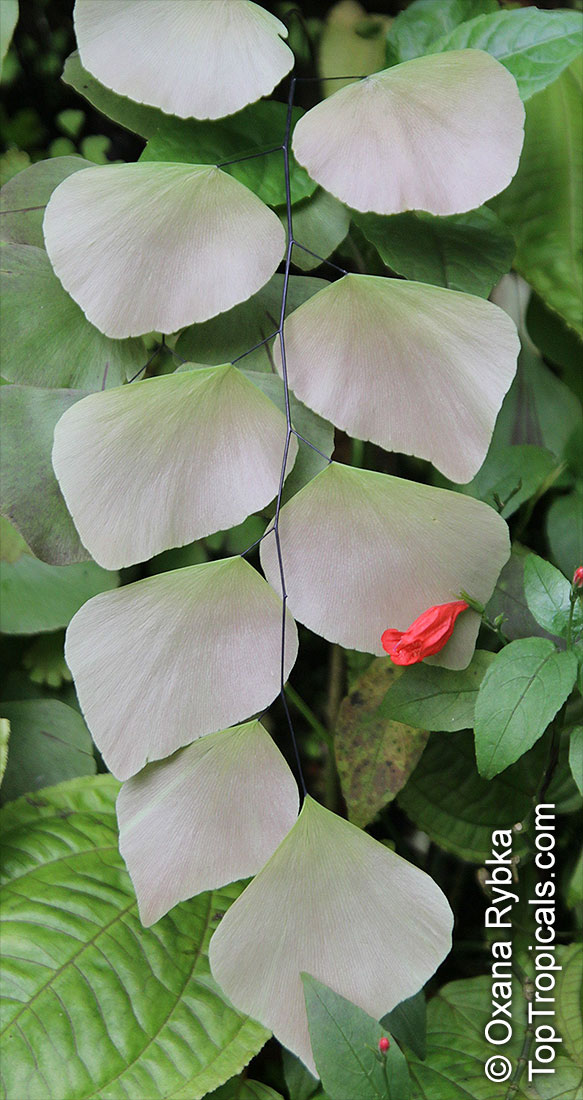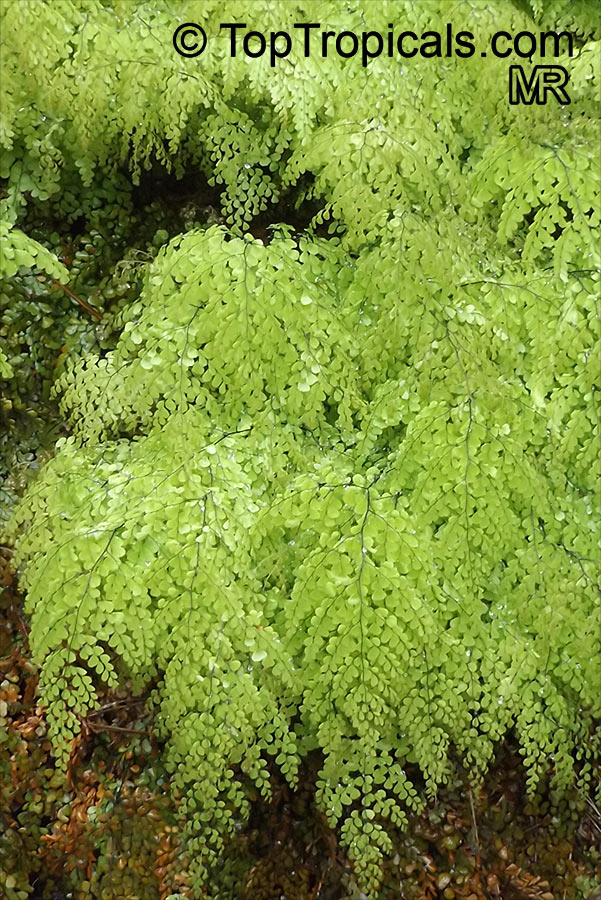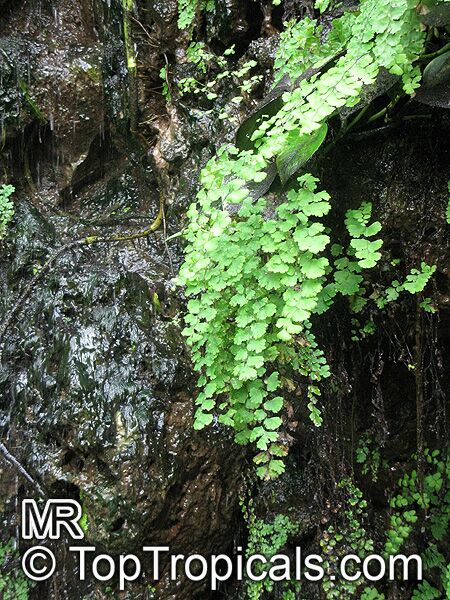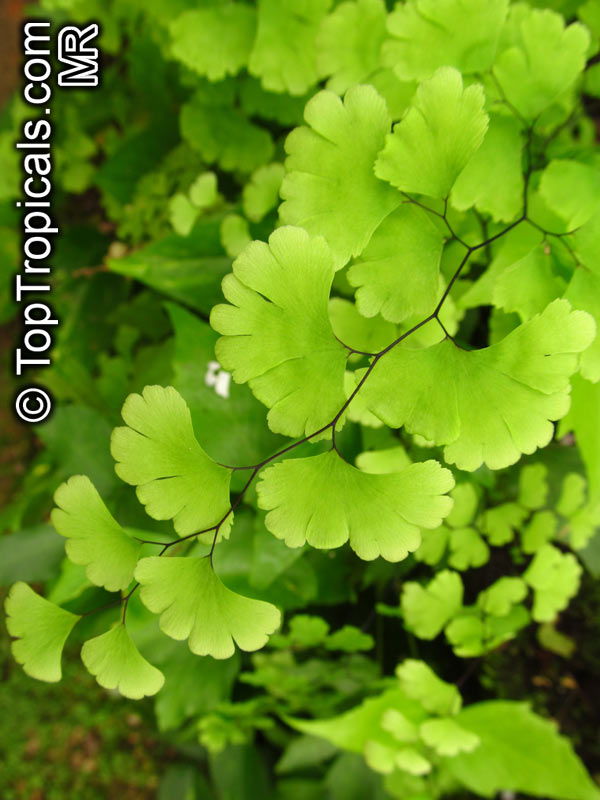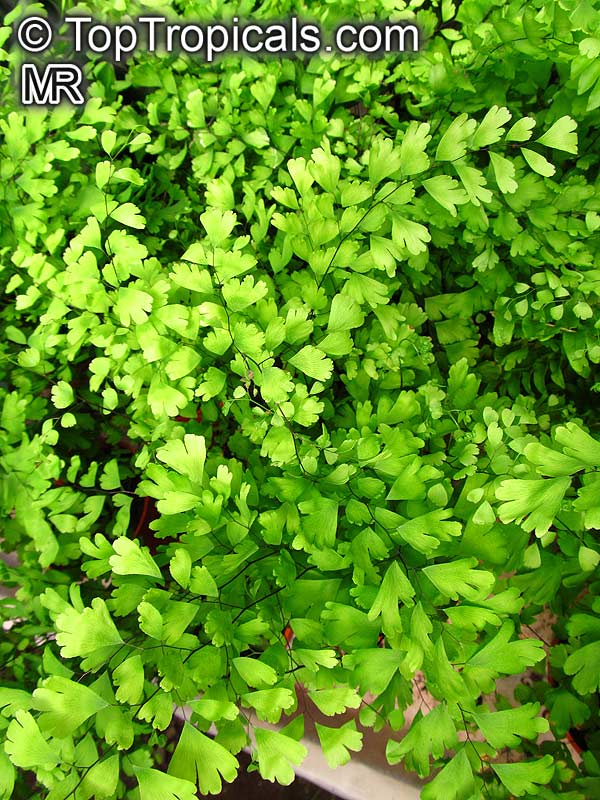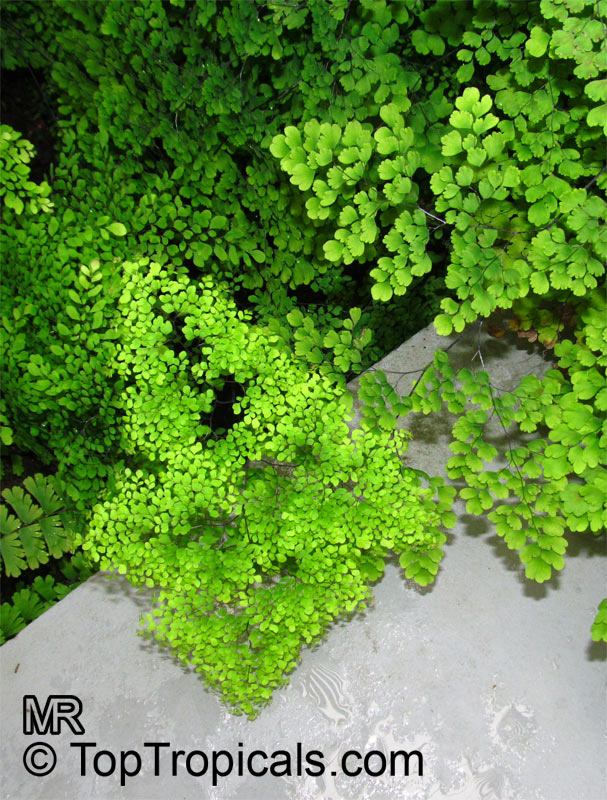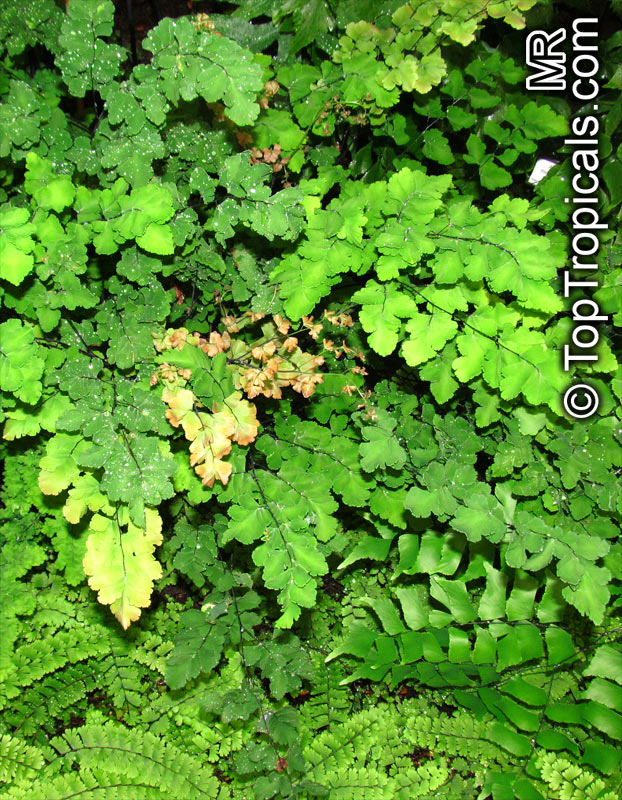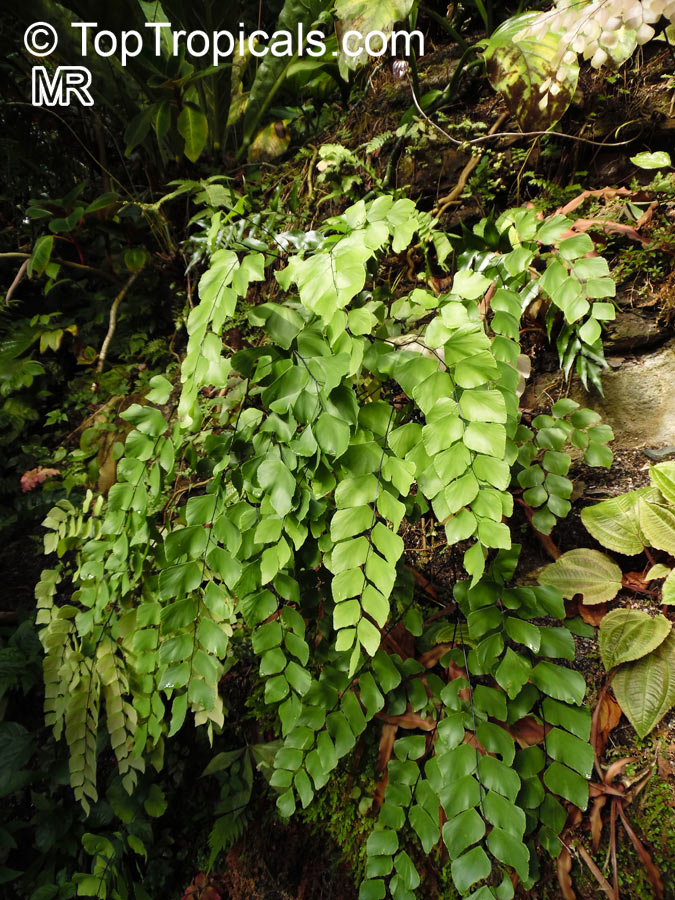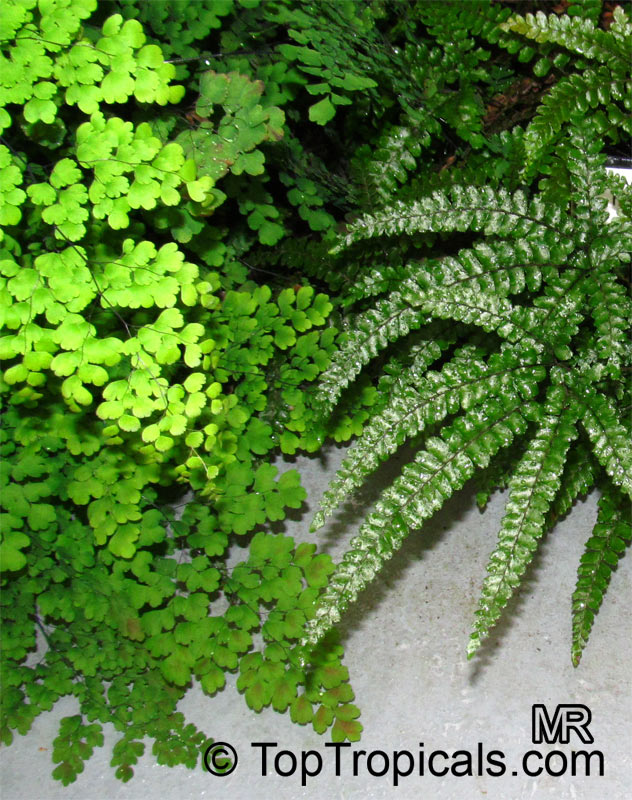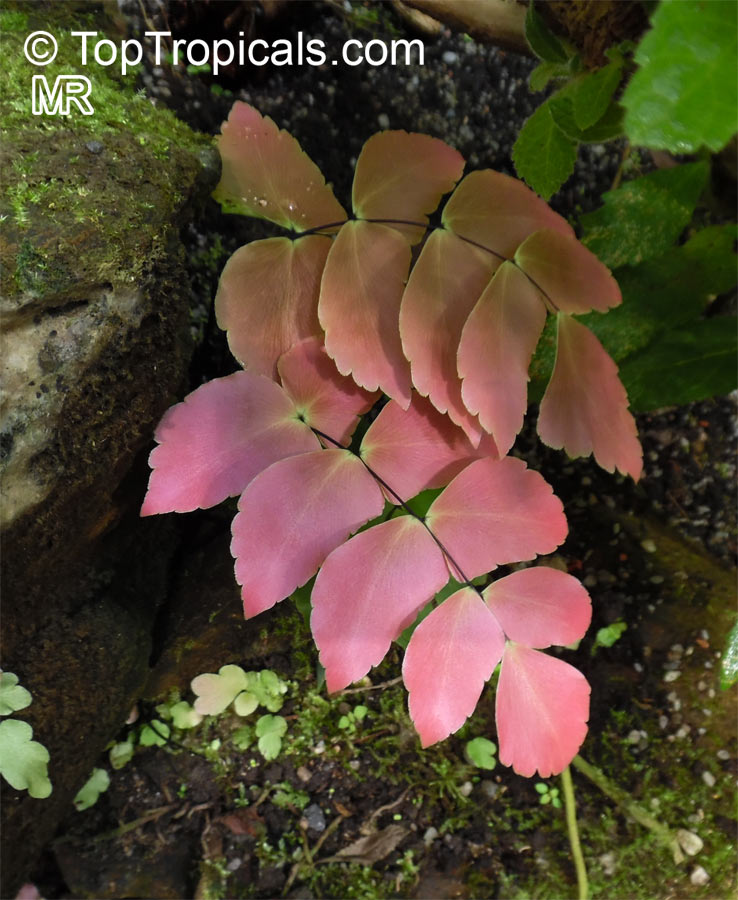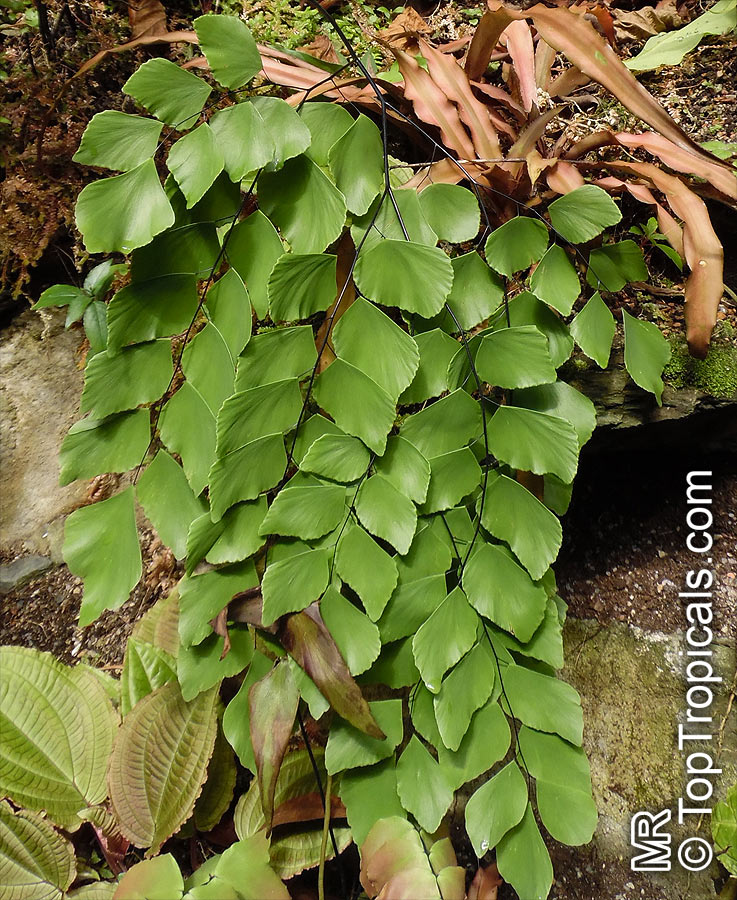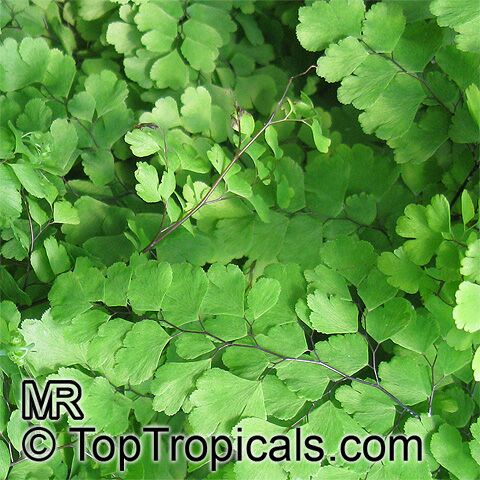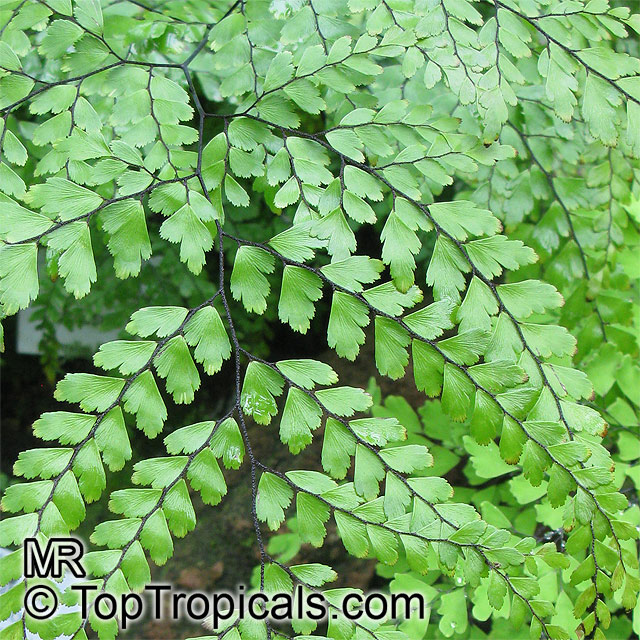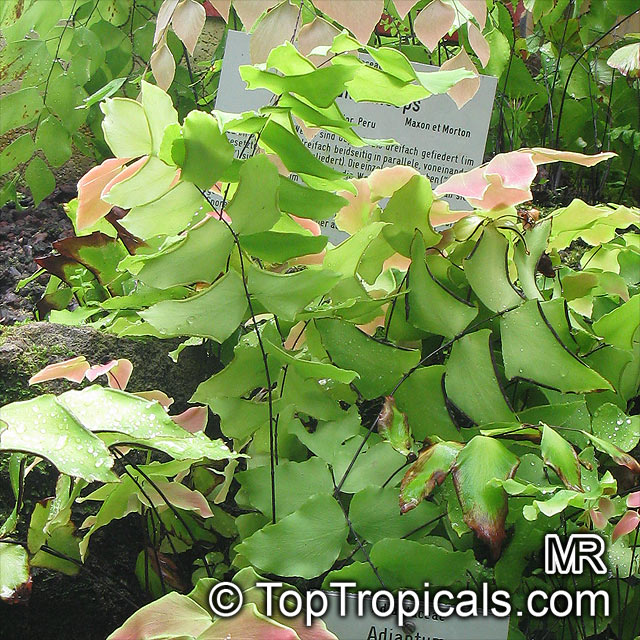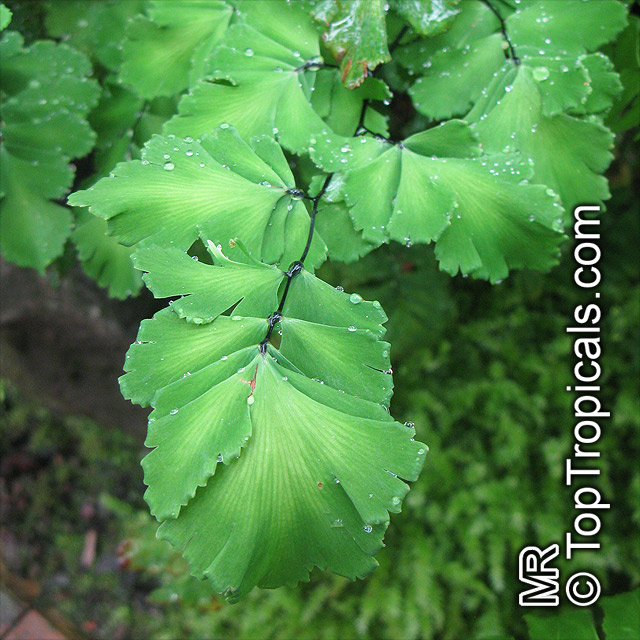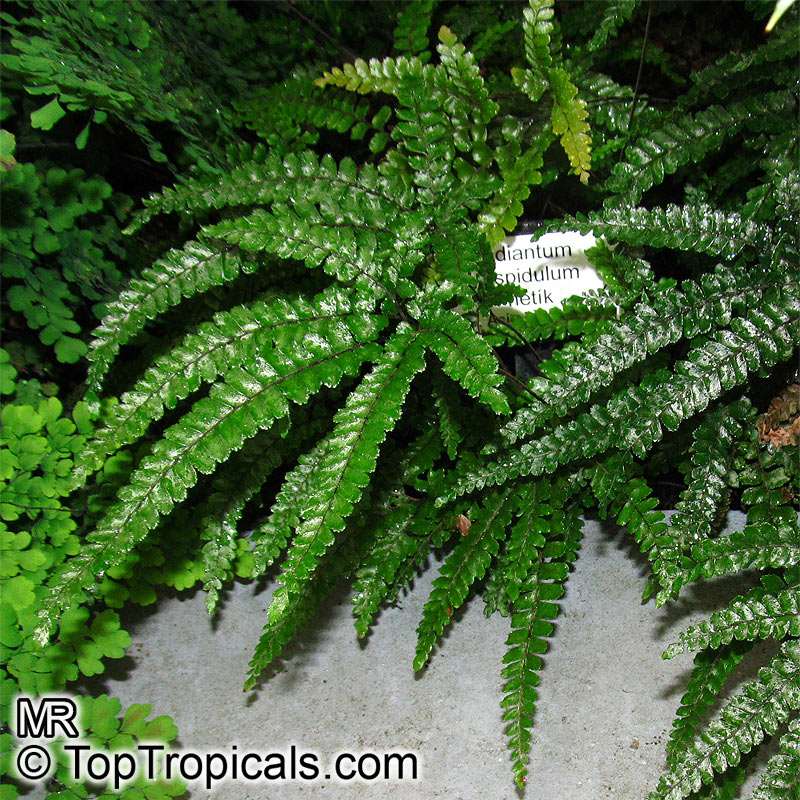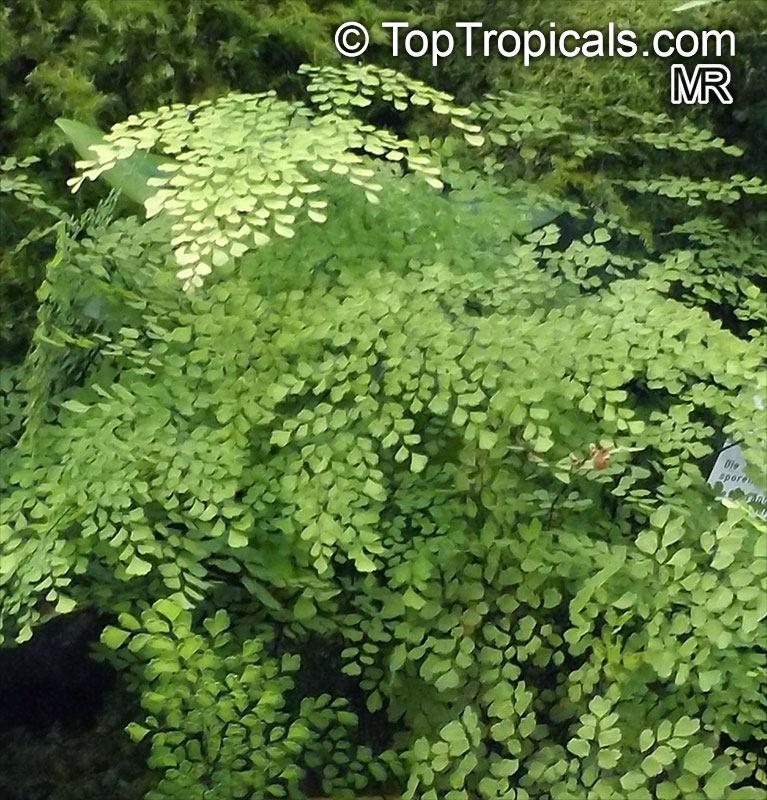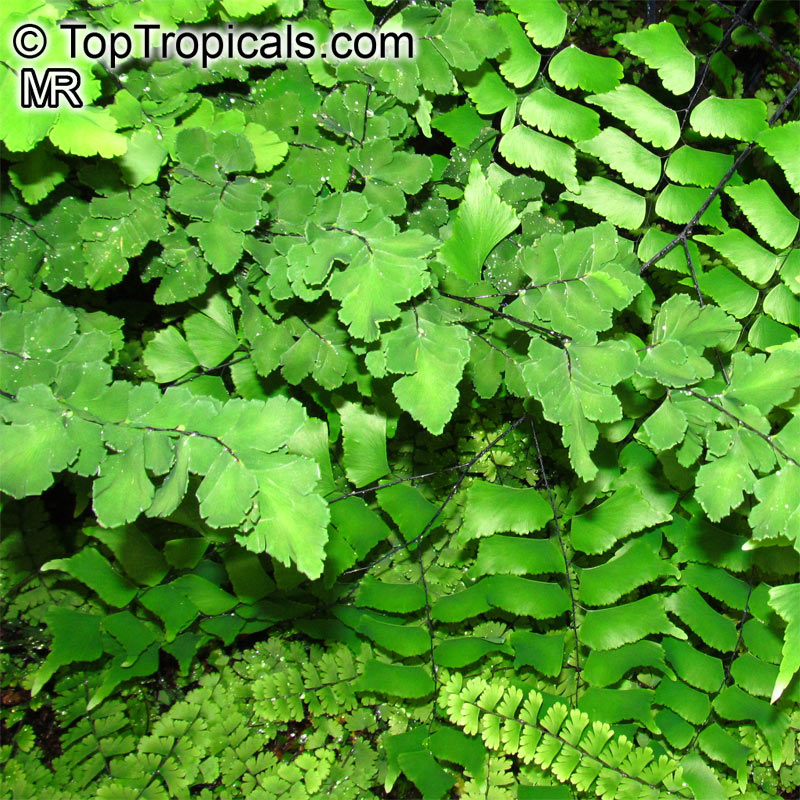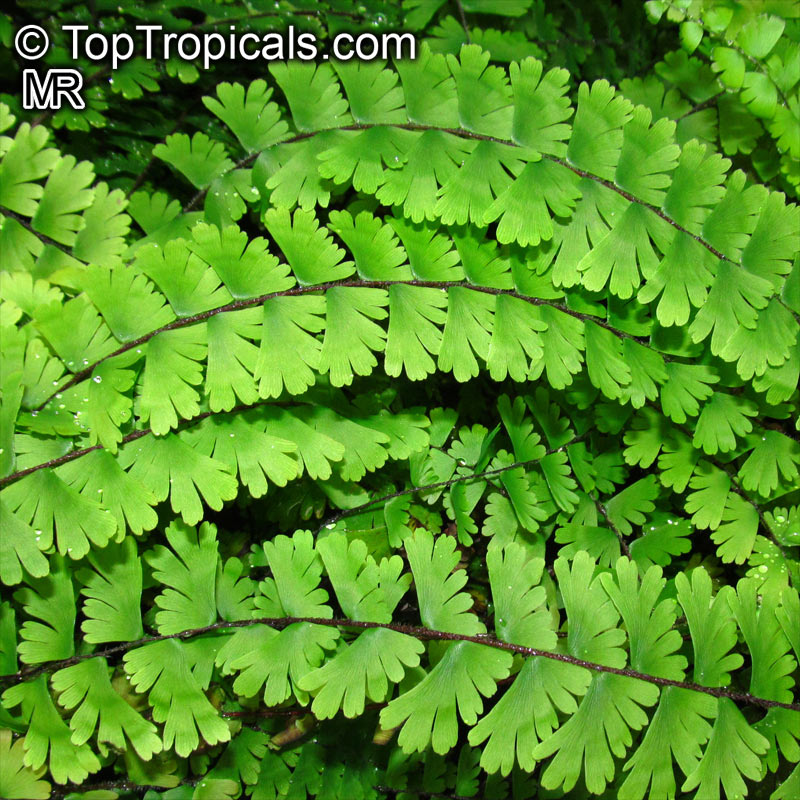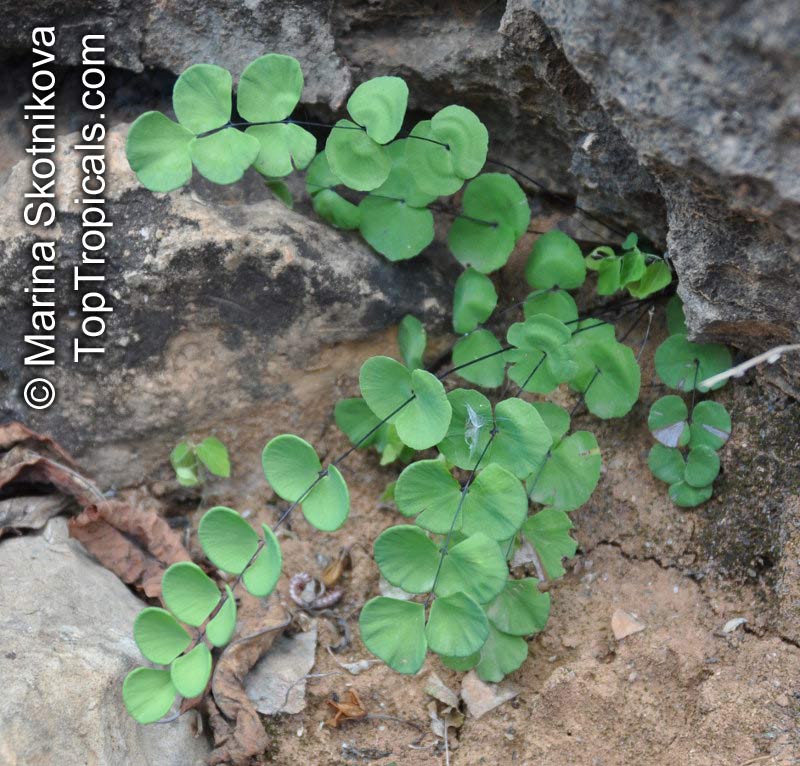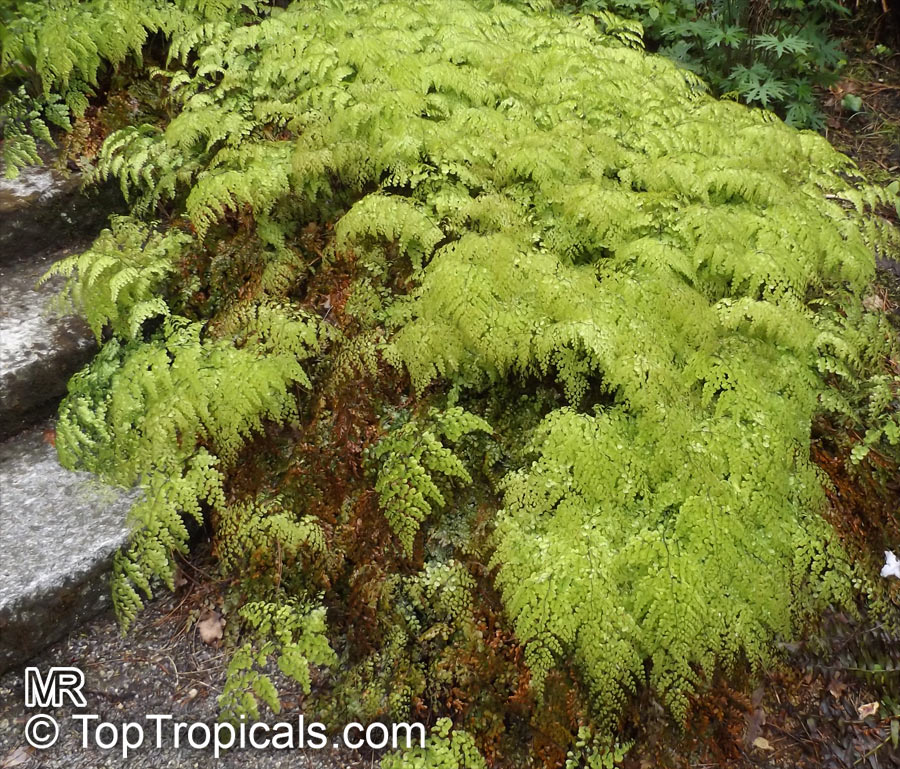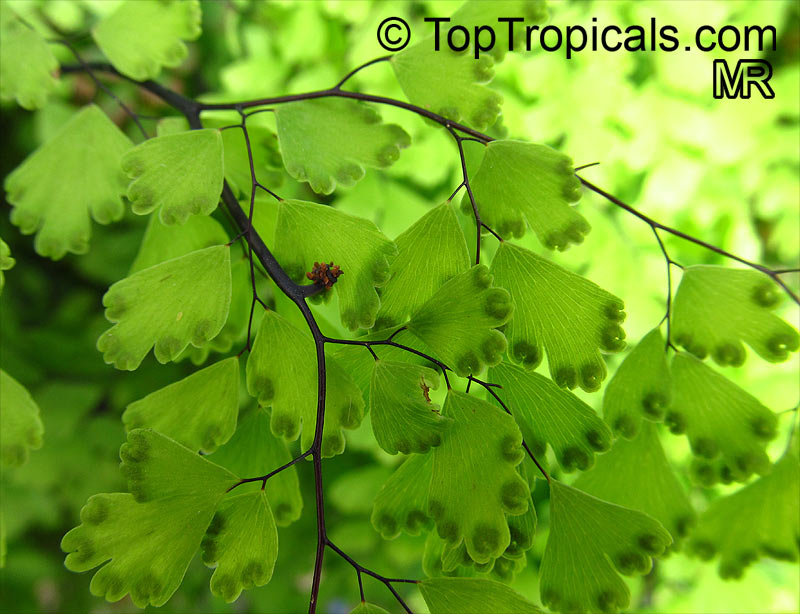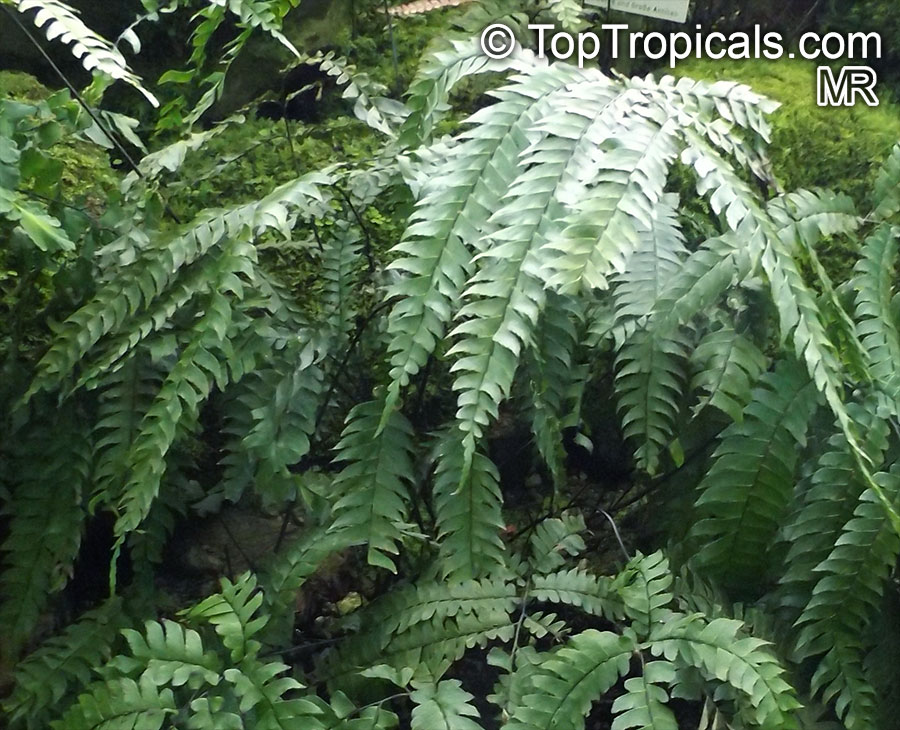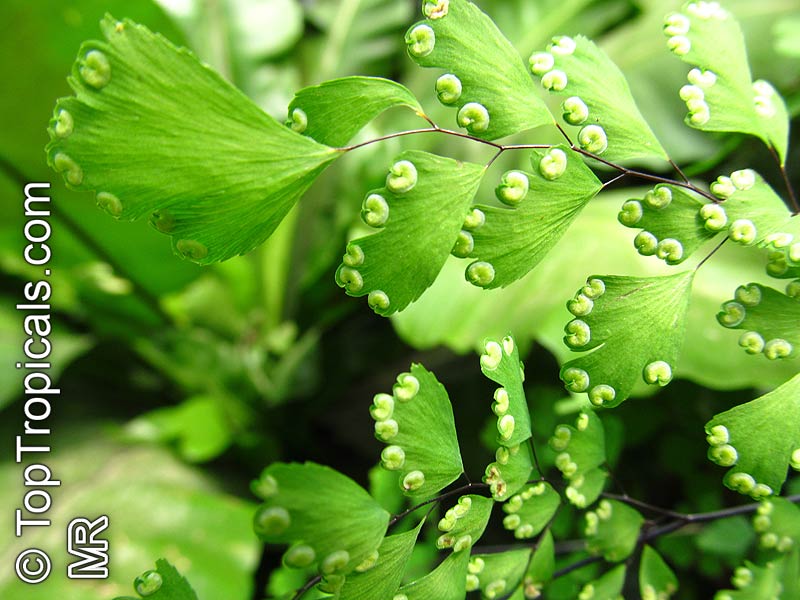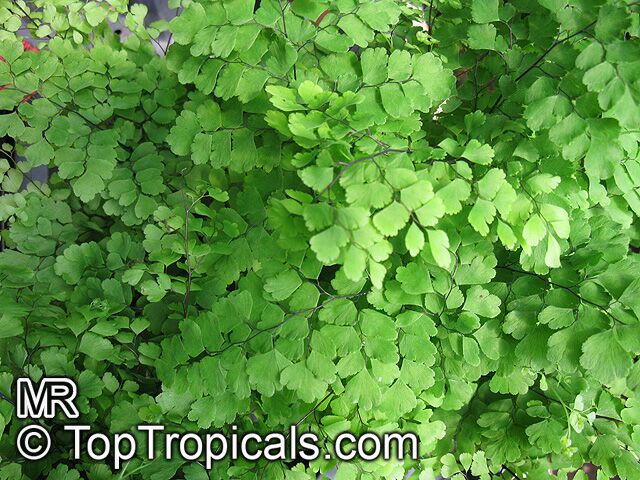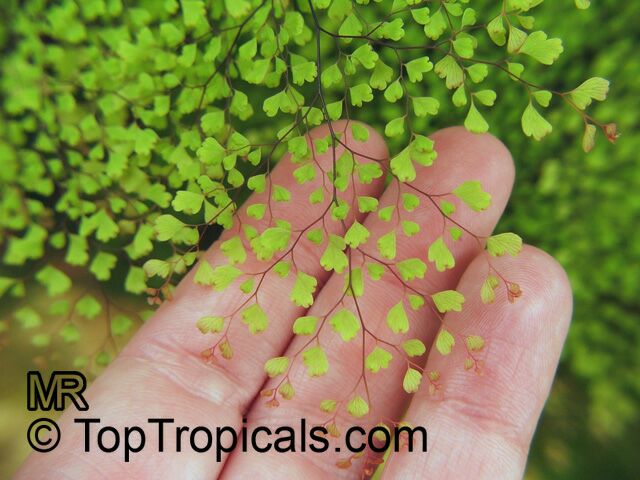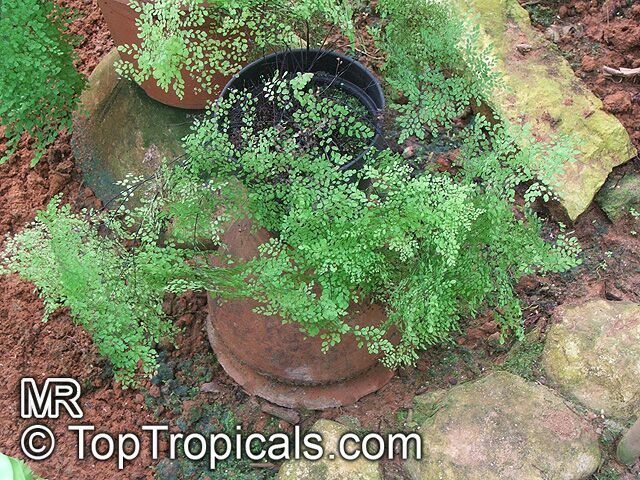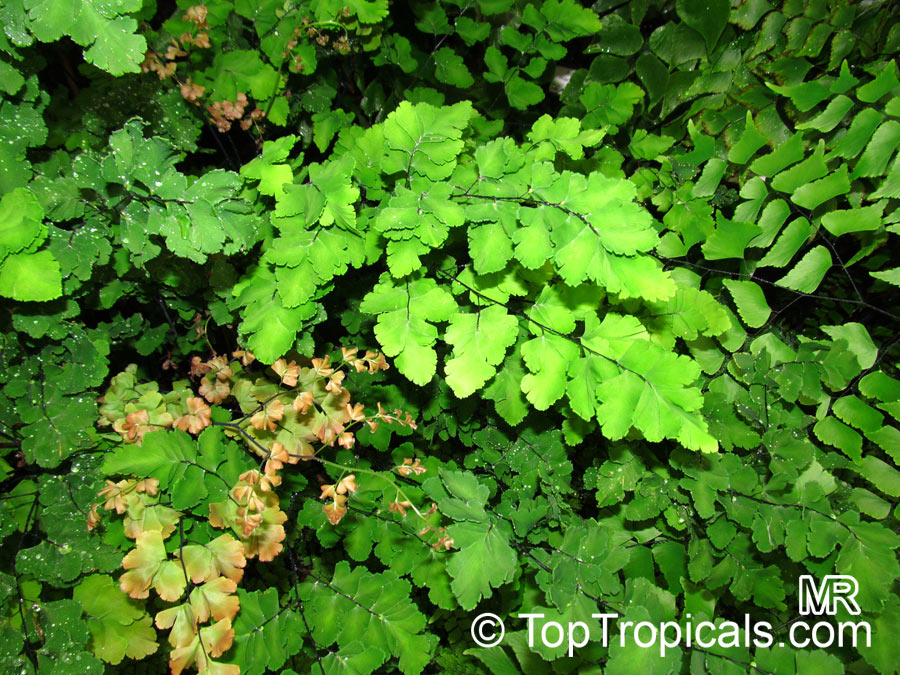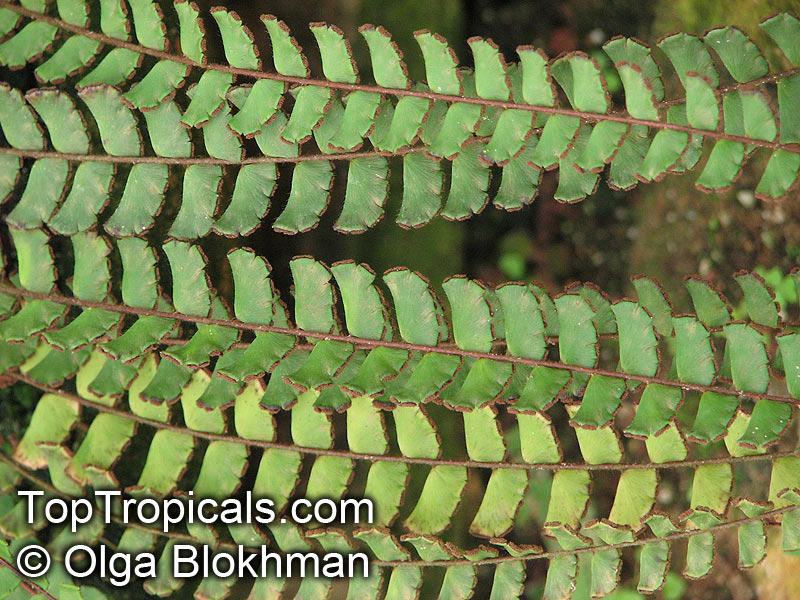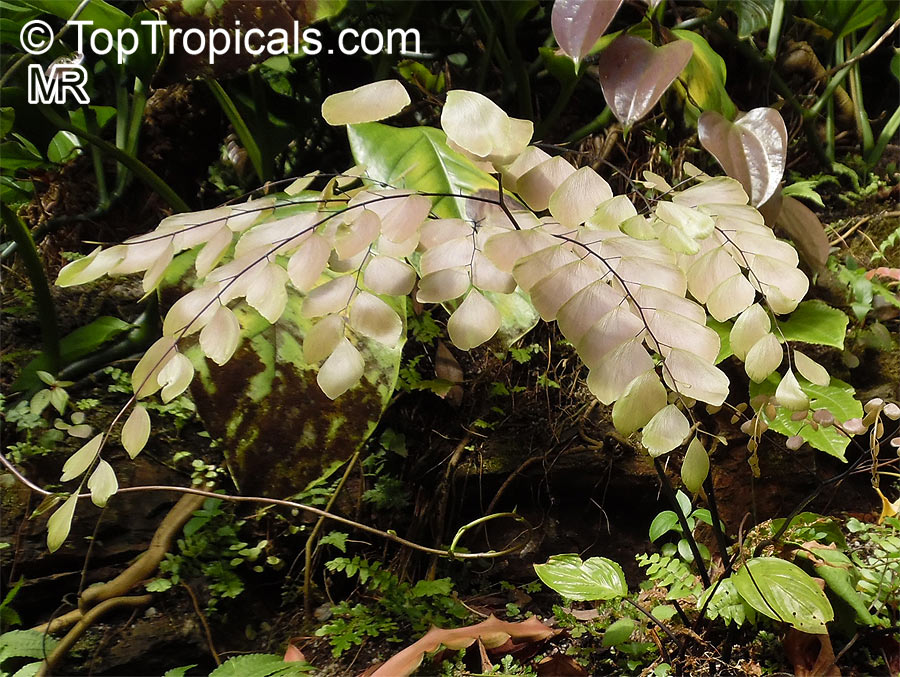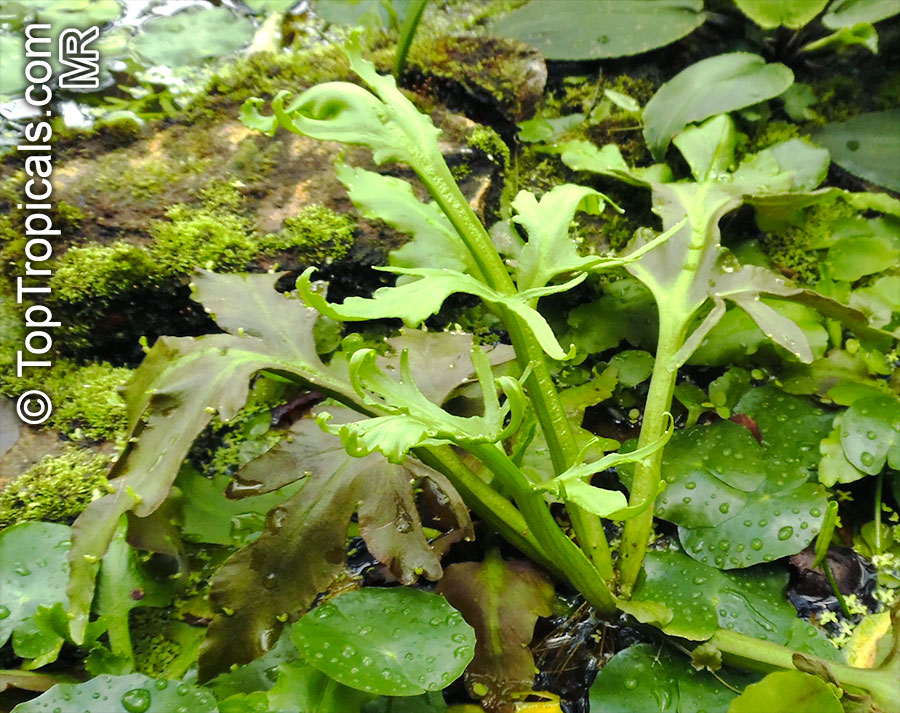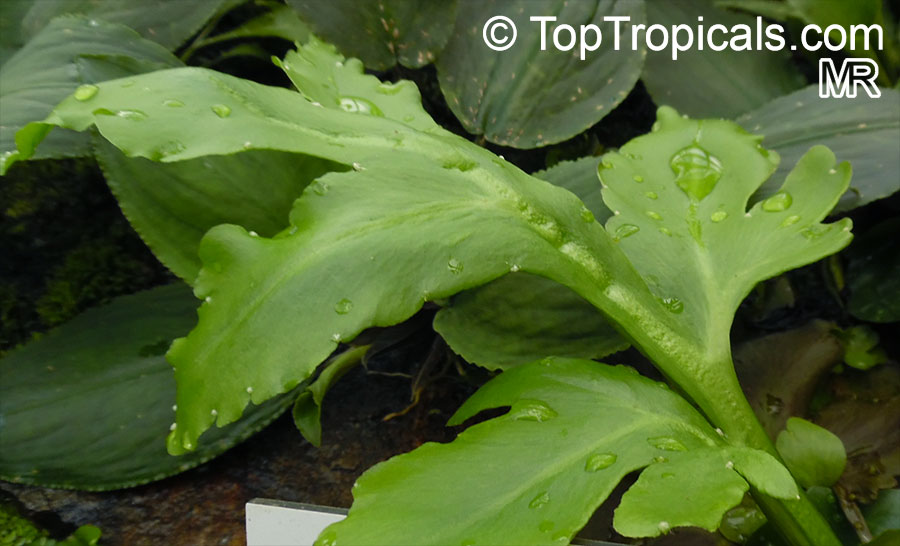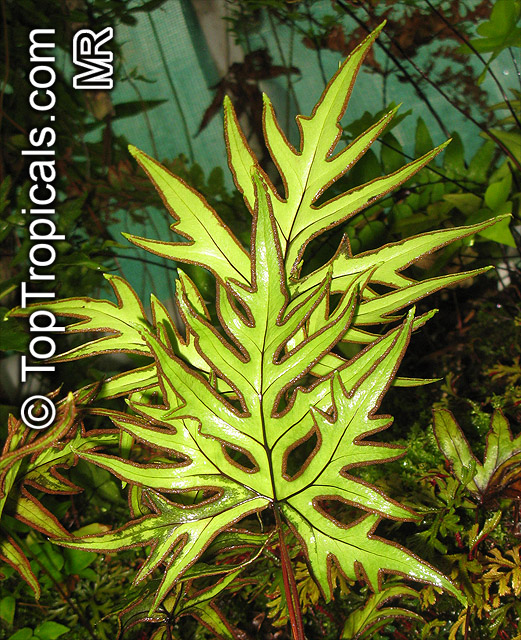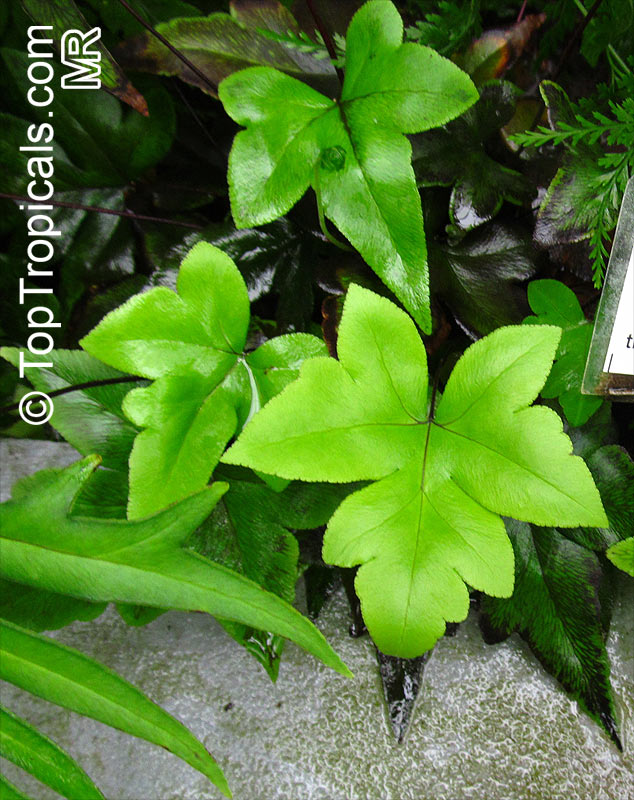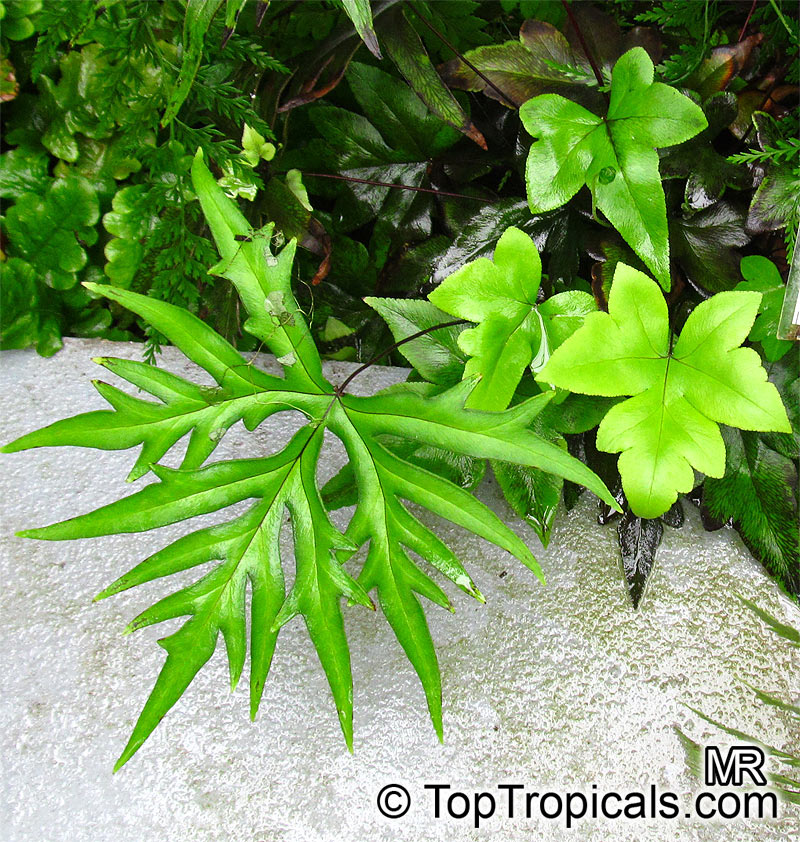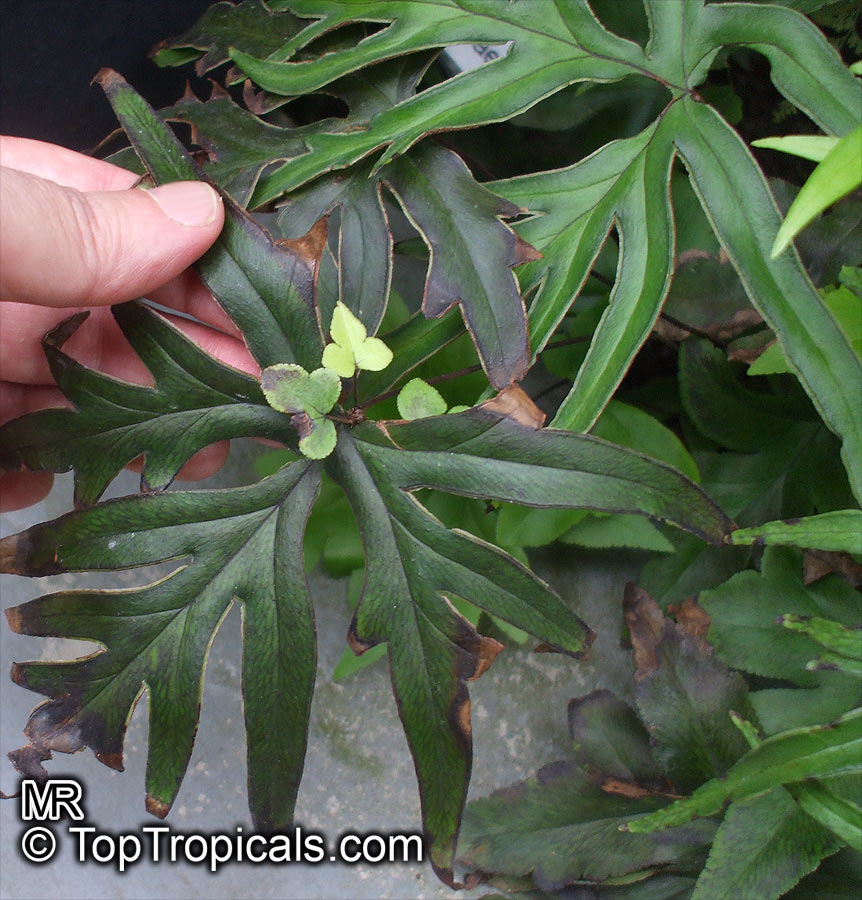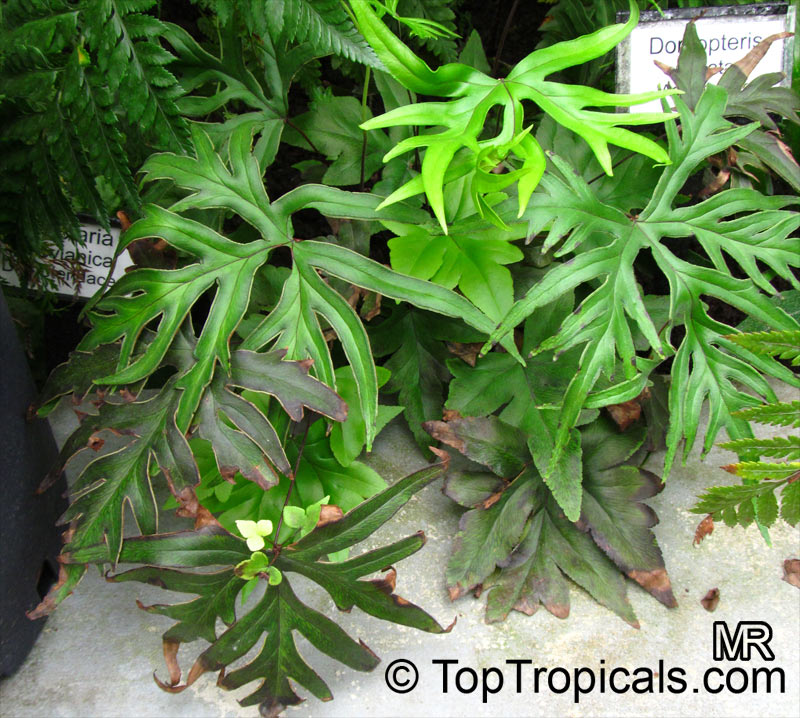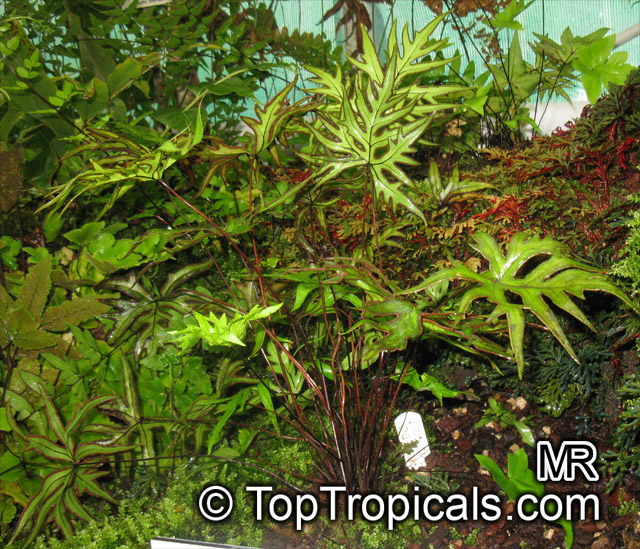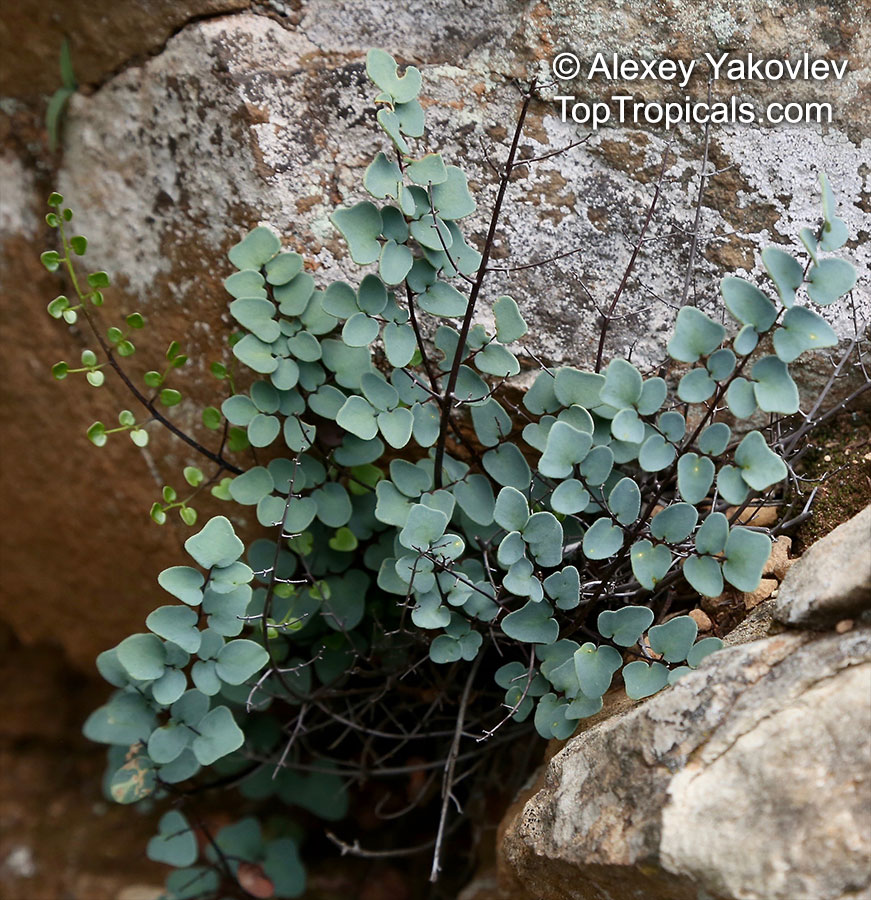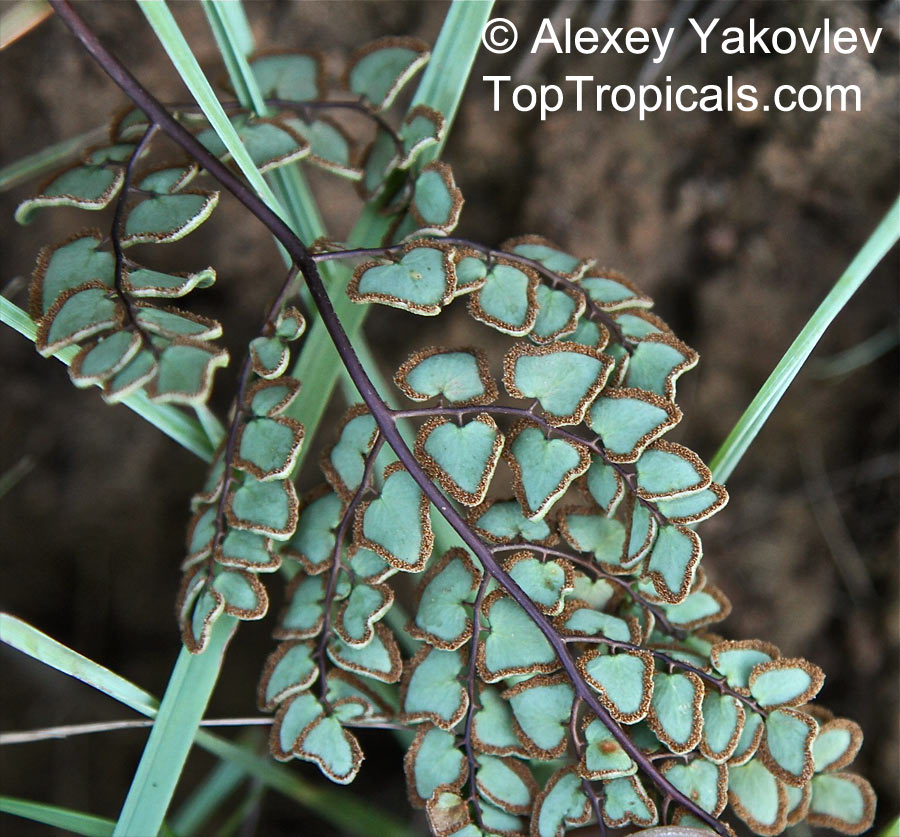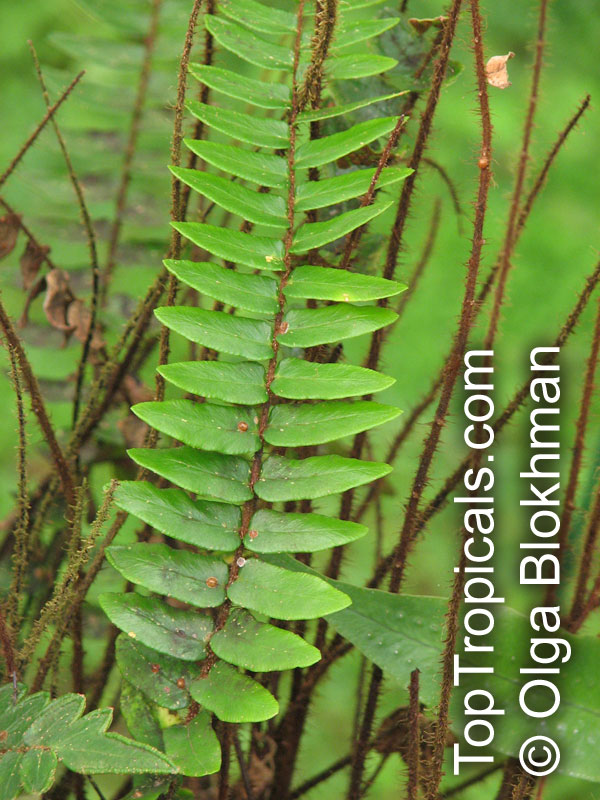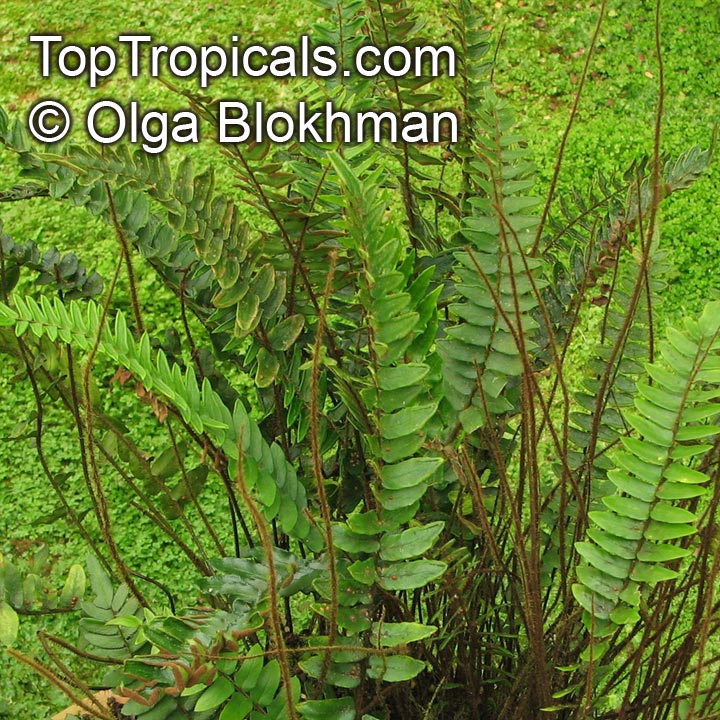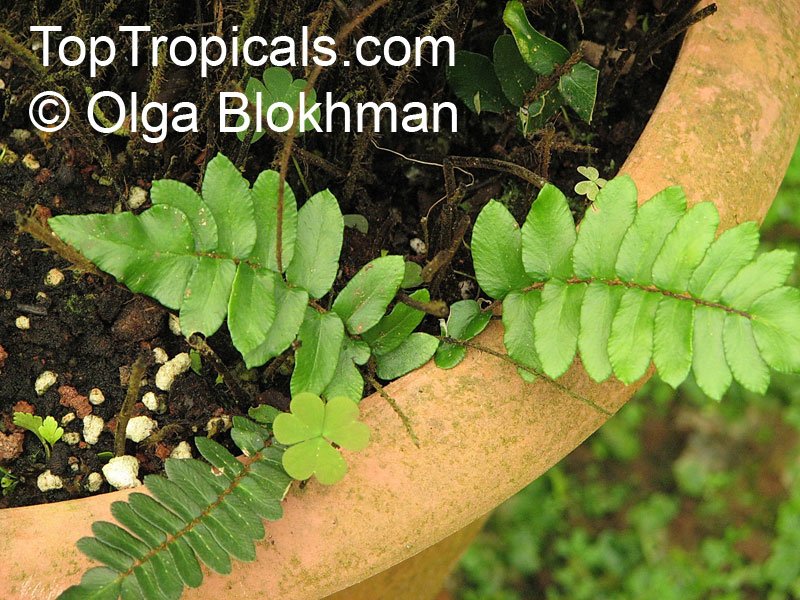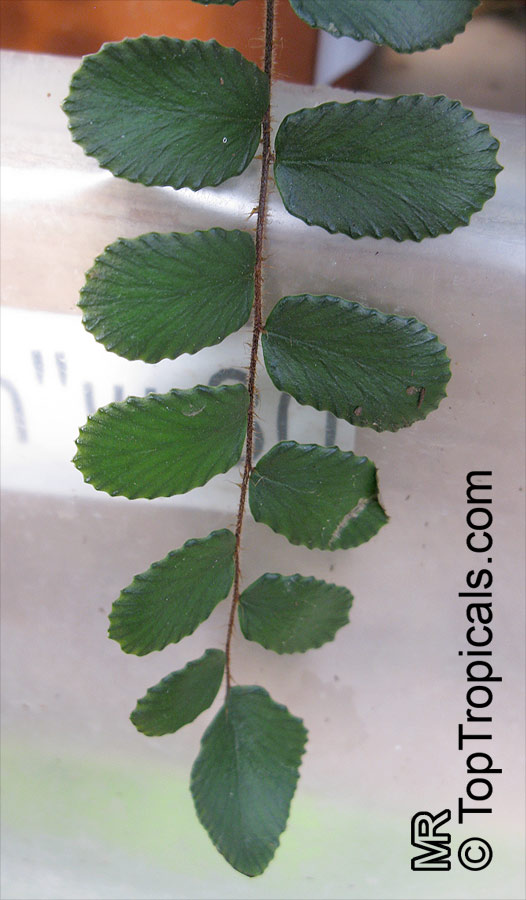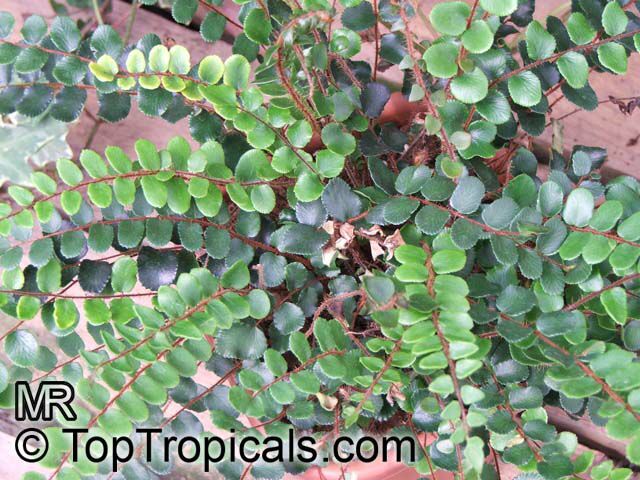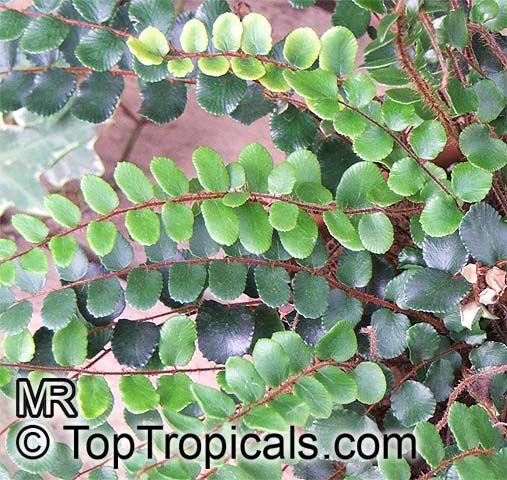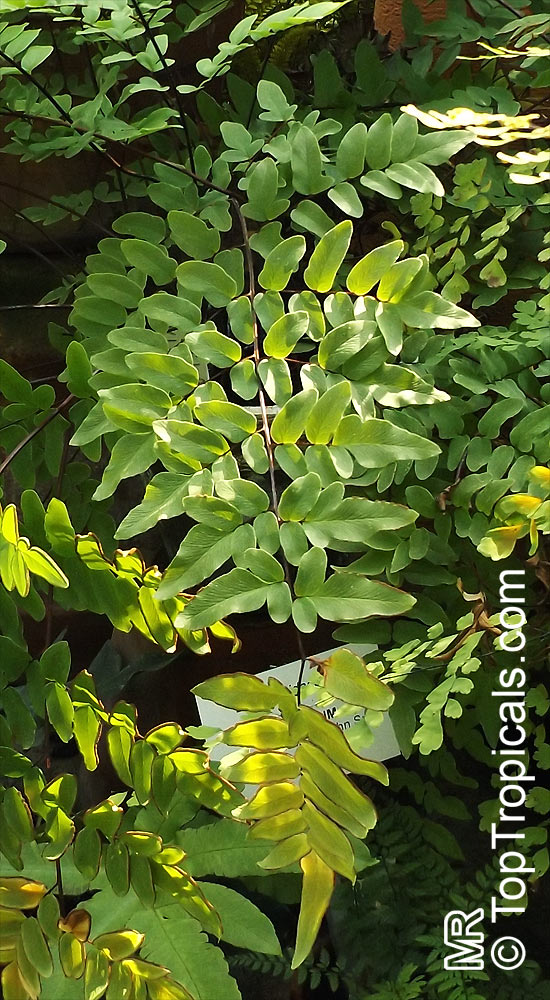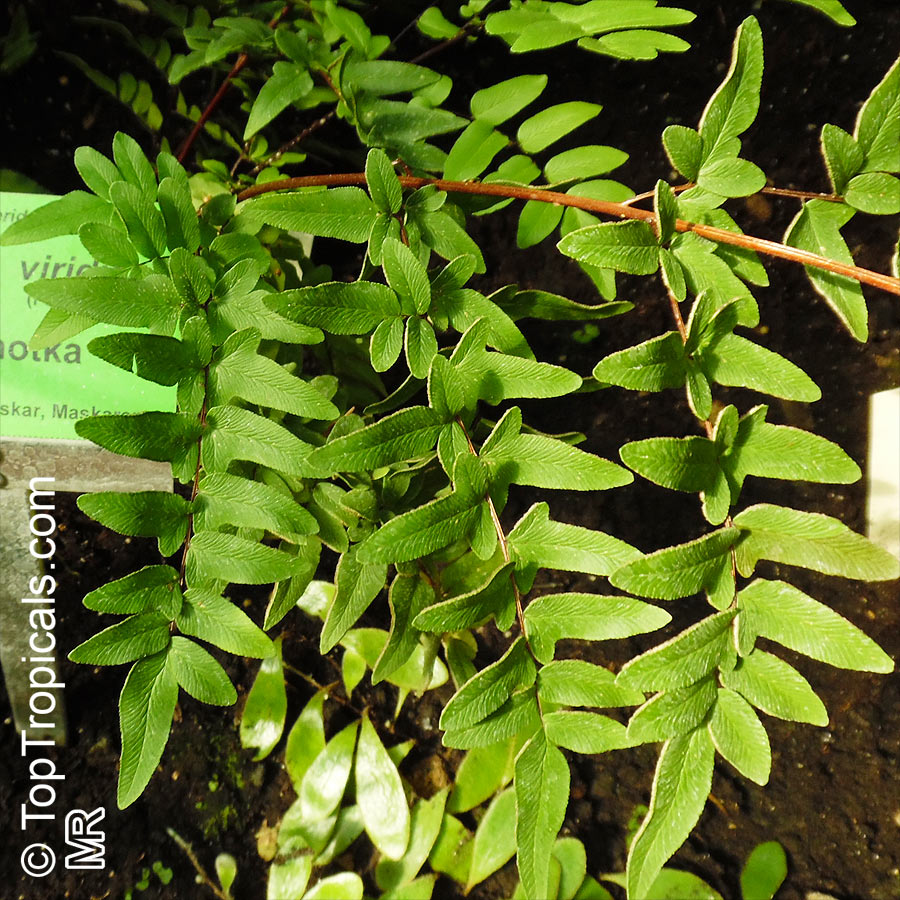Pteridaceae - Botanical Family
Top Tropicals Plant Encyclopedia
| Number of plants found: 13 | Next | 
|
Go to page: | 1 | 2 |
Botanical name: Acrostichum aureum
Common names: Piai Raya, Golden Leather Fern, Mangrove Fern
Family: Pteridaceae
Origin: Pantropical









Acrostichum aureum, also known as Piai Raya, is a small plant that grows to a height of between 2 and 5 feet tall. Native to Pantropical, it grows in USDA Zone 9-11 and is a great plant for adding ornamental foliage to gardens and yards. It is a flood and seaside tolerant plant and can even tolerate salt.
This plant prefers full sun to semi-shade, and can also be grown in boggy or aquatic soil. It needs regular water to keep it looking its best, so make sure to water it every few days during dry spells. Additionally, Piai Raya has ethnomedical properties, and has been known to be used for medicinal purposes.
Growers in cold regions should take special care when growing this plant in a pot. It is best to select a pot with several drainage holes, and the soil mix should be one that readily drains. Additionally, ensure that the pot is well insulated, as the roots are vulnerable to extreme temperatures. Ensure that the soil is also kept moist and fertilize every couple of weeks. With a bit of extra care, Acrostichum aureum can thrive in colder climates.
Botanical name: Actiniopteris semiflabellata
Common name: Eyelash Fern
Family: Pteridaceae
Origin: Eastern Africa



A small, tropical fern producing very pretty, palm-like fronds on a diminutive scale. It like evenly moist conditions with moderate humidity during it's summer growing period, it should be watered sparingly and carefully during colder months.
Botanical name: Adiantum peruvianum
Common name: Silver Dollar
Family: Pteridaceae
Origin: South America





Adiantum peruvianum, commonly known as the Silver Dollar plant, is a popular house plant native to South America. It is a robust small shrub that grows between two and five feet tall, with ornamental foliage and a showy, tropical look.
Adiantum peruvianum is best suited to full sun, semi-shade and moderate water. This plant thrives in areas with high humidity and lots of air movement. It is hardy in USDA Zone 9-11 and can also be grown in a pot in colder regions.
For indoor growing, Adiantum peruvianum needs bright, indirect light, with the occasional mid-day sun. Keep the soil evenly moist, but not soggy, with monthly fertilizer and regular misting. When the plant is in its dormant winter stage, it is best to water only when the soil is completely dry. Be sure to keep it away from cold drafts or areas with low humidity.
Outdoors, Adiantum peruvianum can be planted in well-drained soil, with partial sun. Also, be sure to keep the soil evenly moist and supplement with fertilizer every two or three months during the growing season. If you live in a cold region, it is best to bring the plant in during the winter and protect it from frost.
Overall, Adiantum peruvianum is an easy to care for plant that can add a tropical flair to your home or garden. With some TLC, it will produce vibrant foliage, adding character and interest to any room.
Botanical name: Adiantum sp.
Common name: Maidenhair Fern
Family: Pteridaceae
Origin: Central and South America





Adiantum is a genus of about 200 species of ferns in the family Pteridaceae, though some researchers place it in its own family, Adiantaceae.
Adiantum has slender black stems and delicate, triangular green fronds.
The plant likes higher humidity but should not be misted.
Species:
Adiantum aethiopicum
Adiantum balfourii
Adiantum henslovianum
Adiantum macrophyllum
Adiantum platyphyllum
Adiantum raddianum
Adiantum tenerum
Adiantum tetraphyllum
Adiantum venustum
Botanical name: Ceratopteris cornuta
Common name: Water Sprite
Family: Pteridaceae



This medium large aquatic fern grows as submerged, rooted plant as well as free-floating plant.
Botanical name: Doryopteris pedata
Common name: Doryopteris
Family: Pteridaceae
Origin: Central America




This evergreen and small shrub grows between 2-5 ft in height and loves to be grown in semi-shade. This plant is a native of Central America, and is suitable for growing in USDA Zone 9-11. Doryopteris pedata needs regular watering for proper growth. An ideal soil for them would be one that is well-draining. If the soil holds too much water, the root system can rot. This can damage or even kill the plant.
Doryopteris pedata has ornamental foliage and a very unique growth pattern. Its sterile fronds are maple-leaf shaped while the fertile fronds look like ornate snowflakes or elk-horns. They also develop baby plants at the tips of their fronds. This gives the plant a unique and visually pleasing look.
When it comes to taking care of Doryopteris pedata, it's important to be consistent with watering. The soil should be kept moist, but not soggy. The soil should be allowed to dry out between waterings, but not to the point where the leaves start to wilt. If you live in a colder region, it is best to grow Doryopteris pedata in a pot and place the pot in a sheltered area away from the cold winds. During the winter, it is important that the pot is placed in a warm area. Make sure to use a potting mix that retains some moisture to help the plant survive these harsher climates.
The plant will also require fertilizing during its growing season. An all-purpose, balanced fertilizer should be applied once in the spring and again in the summer. Always ensure that the fertilizer is diluted as per the instructions on the packet as over-application of fertilizer can have a negative impact on the plant.
Doryopteris pedata is a unique and visually appealing plant that can be grown in semi-shade. It is characterized by beautiful ornamental foliage and grows baby plants at the tips of its fronds. When it comes to taking care of this plant, it is important to keep the soil moist and fertilize it with a balanced fertilizer during its growing season. In colder regions, it is best to grow Doryopteris pedata in a pot and to keep the pot in a sheltered, warm area. With a little bit of extra care and attention, Doryopteris pedata will bring beauty and joy to any garden.
Botanical name: Pellaea calomelanos
Common name: Pellaea
Family: Pteridaceae
Origin: Eastern Africa, South Africa






The species can be found on many hillsides where it usually grows at the base of rocks and often manages to survive in tiny pockets of soil in the crevices. It can withstand seasonal droughts remarkably well and is therefore found even in exceptionally dry places.
Botanical name: Pellaea falcata
Common name: Sickle Fern
Family: Pteridaceae (Formerly:Sinopteridaceae / Adiantaceae)
Subfamily: Cheilanthoideae
Origin: Australia








This is an interesting fern, which grows in spreading colonies. This species is quite variable, with some fronds which are large and coarse, and others that are more compact.
This plant was growing in a sunny area, hence its pale color. In shadier areas, it takes on a much darker green.It is drought hardy and easy to grow, though, through losing some of its pinnae, and the remnant leafless stalks of old fronds, it can get a bit untidy.
Botanical name: Pellaea rotundifolia
Common names: Button Fern, Round-leafed Fern, Tarawera
Family: Pteridaceae (Formerly:Sinopteridaceae / Adiantaceae)
Subfamily: Cheilanthoideae
Origin: Australia, New Zealand




The Pellaea rotundifolia, or button fern, is an attractive, small shrub native to Australia and New Zealand. It will not overtake as much space as many other plants do, making it the perfect choice for a variety of gardens of all shapes and sizes. When grown outdoors, the button fern prefers being placed among rocks, near small waterfalls and in semi-shade. It typically grows to a height of around 2-5 ft and its dark green, rounded leaves are attached to firm and wiry stems.
Owing to its beauty, this fern is a popular choice for indoor and outdoor gardening, especially for its ease of upkeep. It is usually grown in USDA Zones 9-11, and is a perfect pick for shady rock gardens as it does not spread as prolifically as other plants. However, you should note that the button fern needs moderate water, so giving it a thorough drenching every few weeks will help keep its foliage lush and healthy.
It can also be a great choice for cold regions, especially if the plant is placed in a container. You should ensure that you choose a pot that has sufficient drainage holes, and place the fern in a spot that gets plenty of indirect sunlight. Feed the fern with a water-soluble or slow-release fertilizer during spring and summer, to give it the nutrition it needs to grow and survive in colder regions. Additionally, you should also protect the plant from extreme cold or winds on especially chilly days. Wrapping the fern in burlap or some other layer of protection and adding mulch up to the stem can help protect the fern from extreme winters.
With the right care, the button fern can be a gorgeous ornamental feature in both indoor and outdoor gardens. Perfect for adding texture and color to any space, this tiny shrub with its beautiful foliage is sure to attract plenty of admiration.
Botanical name: Pellaea viridis
Common name: Green Cliff Brake
Family: Pteridaceae (Formerly:Sinopteridaceae / Adiantaceae)
Subfamily: Cheilanthoideae
Origin: Australia





| Next |  |
Use link to repeat this search:
https://toptropicals.com/cgi-bin/garden_catalog/cat.cgi?search_op=and&keyword_op=and&language=e&family=Pteridaceae&number=10
&no_change_lang=1&user=tt&sale=1&first=0
